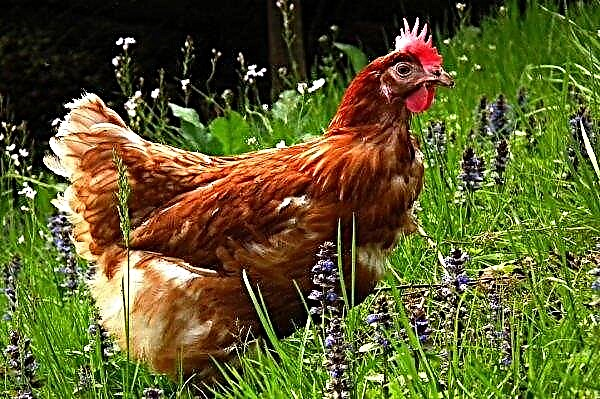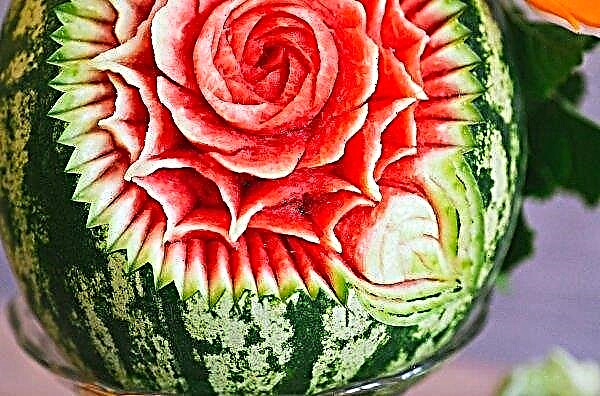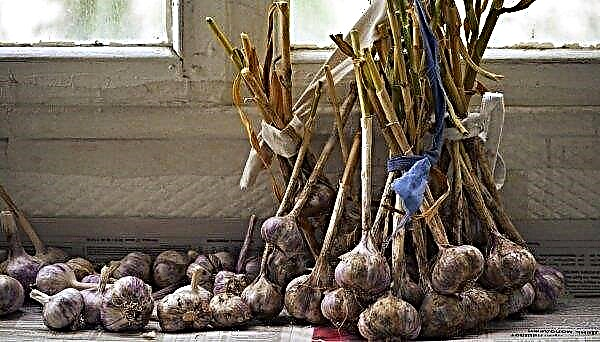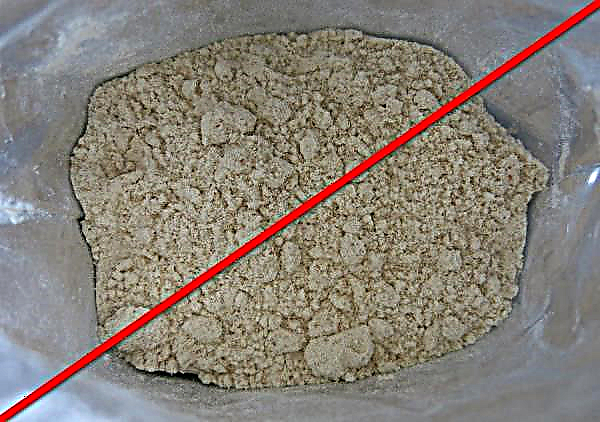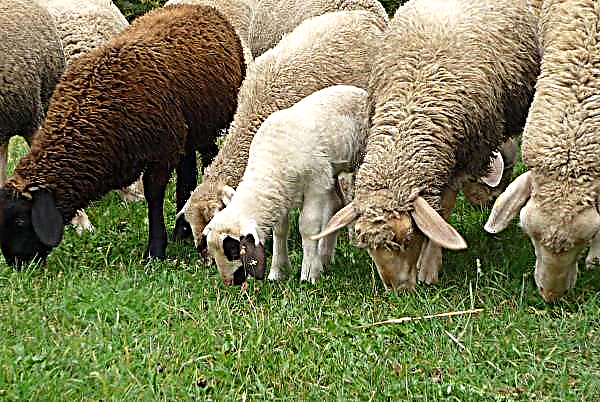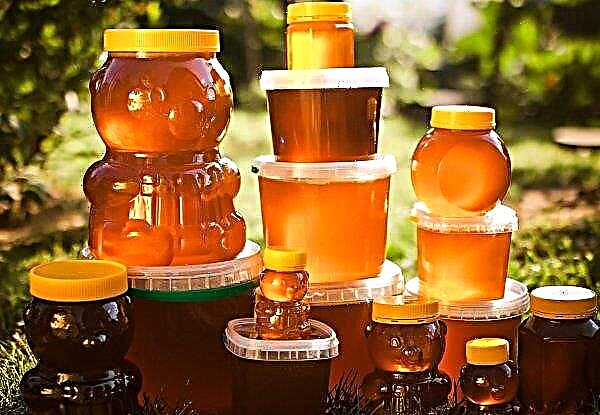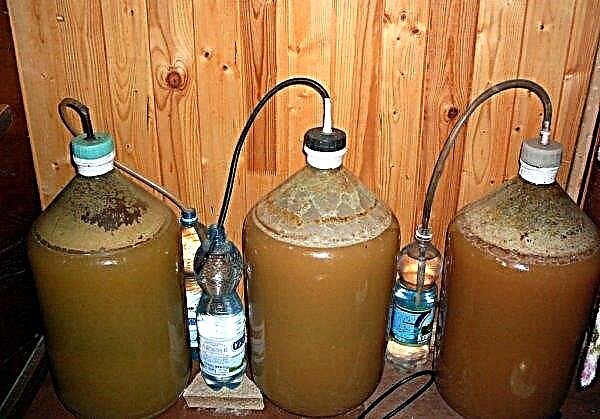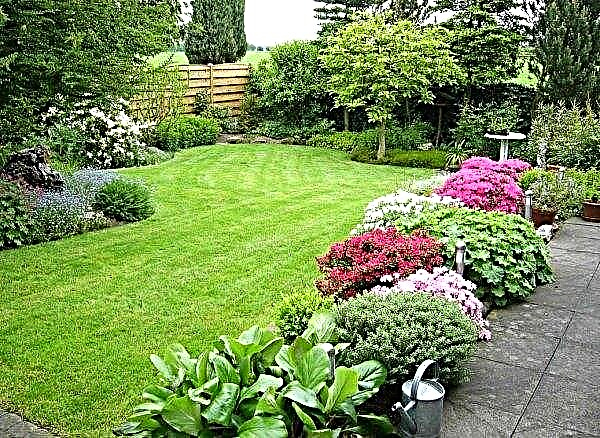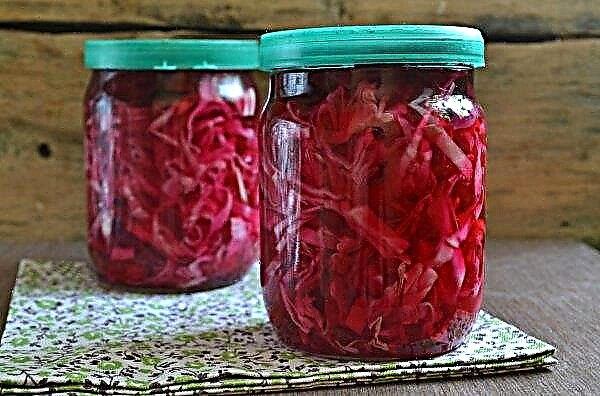The representative of perennial tuberous flowers of the Iris family gladiolus, or fennel, has long been a popular flower in gardens and summer cottages. The genus includes about 280 species. Subtropics and tropics are considered the homeland: Africa, Asia and even Madagascar. The ancestors of the modern varieties came to Europe in the XVII century. Selection of these plants began to be actively engaged in the century before last. From the article you will learn how to care for gladioli and how to prepare them for winter.
Preparing gladioli for winter
The main reason for the special approach to skewers in the autumn is considered protection against infection and frost, therefore it is right to do this with these plants:
- Trim the flowers.
- Dig out the bulbs.
- Store them until planting.

Under good conditions (if the gladioli are healthy), the leaves retain their color for another month after flowering, except for early varieties. You do not need to wait for yellowing, on the contrary, you should dig out before the color starts to change. Otherwise, plants with faded leaves need not only to be dug up, but also destroyed.
Did you know? Three hundred years before our era, the skewer was eaten: baked or made cakes with it.
Early varieties are harvested first, then later varieties. A suitable time in the middle lane is the beginning of October, the main thing is to monitor the temperature (which begins to tend to zero or lower). But first, pruning should be done to prevent infection with thrips or other pests and diseases. Truncation is done before the onset of frost.
Cut flower stalks up to 2–4 cm from the bulb with a clean knife or secateurs in dry sunny weather - it is recommended to do this in the morning or in the evening. The rest of the foliage, which does not need to be removed, will cover the slices.
Important points related to pruning:
- Do not pick leaves when picking bouquets;
- one week before the process, stop watering and top dressing;
- Best of all, start pruning the flower stalks as soon as the flowers have completely withered.
Autumn care
In the autumn season, gladioli need special care, which consists in moderate watering and top dressing of bulbs. It should be watered late varieties in warm, clear weather once a week. Enrichment with moisture of early varieties ceases by autumn.
Remember, that:
- water for irrigation should be settled and heated;
- it is necessary to water up to 1/4 meter deep in the soil;
- 1.5 to 2 buckets of water are used per 1 m².

Loosening, weeding and hilling are the necessary actions after watering. At the end of September, you can finish watering the gladiolus - wait until the digging time.
Important! If you unnecessarily tighten the time spent on the trimmed bulbs in the ground, there will be a danger of their infection with fungal spores.
It is important to feed the skewer in the growing and flowering season, by the autumn a single fertilizer is administered. For this, potassium permanganate is used at the rate of 5 g per 1 bucket of water per 1 m² of planting.
The sense in such feeding is large, it is carried out for two reasons:
- to saturate nutrients;
- for disinfection.

How to dig gladioli in the fall
The process of digging is carried out a month or a half after the end of flowering. In colder regions (middle band) this time falls on September, in warmer regions (south of the country) - at the beginning of October. Dig bulbs only in dry sunny weather.
Important! Be sure to destroy infected or damaged gladioli bulbs, do not allow them to be stored together with healthy ones.
Rules of the procedure:
- A shovel cuts into the soil around the bulb at a distance of about 7 cm from it.
- Then a layer of earth rises, if you press the handle of the tool.
- Next, you need to choose corms with "kids" from the soil and put them in baskets or a sieve.

Now you need to get rid of the leaves that covered the cut of the stem, and process the bulb like this:
- cut the stem of the peduncle even shorter;
- to separate old bulbs from new ones;
- prune the roots slightly.

It is necessary to tear apart young and old corms when they are pulled out of the dry earth, and if not, wait until dry. When all the underground parts of the plant are removed from the ground, it is important to rinse them.
Bulb Processing
Dug and washed corms require further care before storage, which is disinfection and drying. First, pickle the bulbs and the “kids.”
To do this, they need to be sorted and processed in one of the ways:
- place in a 1–2% potassium permanganate solution for 30–40 minutes;
- you can use the "Maxima" ampoule, dissolved in 2 liters of water, the exposure time is 30 minutes;
- or dissolve the ampoule of the Decis preparation in 5 l of water and treat with this agent for 40 minutes. bulbs;
- or use the “Fundazole” solution for half an hour, and then treat the material with solutions of potassium permanganate or boric acid.

There are other options for disinfection: 20 g of chlorophos per 10 liters of water and 10 g of potassium permanganate for the same amount of liquid. Soak in each solution for 20 minutes, rinse, and then lower first in water heated to + 50 ° C, then in cold.
Did you know? Ancient warriors wore bulbs around their necks like amulets protecting them from death.
Drying is important - it prevents decay. At a temperature of about + 30 ° C, the bulbs are dried for a week, then at + 20 ° C they are dried for one month. Before the process, it is necessary to cover the corms with gauze, which are important to lay out for drying so that they do not touch each other.
By the way, you need to peel adult planting material from the husk, and children should not, because the husk protects them.If the gardener does not have such a place where it is possible to control the temperature regime, he should dry the material for 2 months in a ventilated room or in the sun, but avoid direct rays.
Sorting
This stage can be carried out both before processing and drying, and after. The separate location of adults and young bulbs helps to properly carry out preparatory care before storage. Damaged material can be treated with paraffin, but in order to avoid illness and damage to future planting material, it is still better to burn those corms, in the good condition of which the gardener is not sure.
By the way, when the dried onions are ready for storage, it is useful to prepare cloves of garlic and change them when they begin to dry. Slices should be laid out mixed with planting material of gladioli. This method prevents infection by pests. An important point in sorting is sorting out by variety. Each of them is useful to sign and store separately.
Storage rules
There are three places available to a modern gardener for storing gladioli corms:
- flat;
- cellar;
- refrigerator.

Bulbs should be kept at home at a temperature of +8 ... + 10 ° С, for example, on a glazed loggia, laying several layers of newspaper between gladioli. Planting material is well stored in the cellar, since conditions (temperature up to + 7 ° C and humidity of about 60%) are suitable.
Important! After the expiration of the winter storage period, the bulbs can dry out very much, so they are soaked for several hours before the upcoming planting.
For such a place, ventilated (with slots, mesh) boxes are used, and skewers together with fruits should not be put for storage for the winter to avoid rotting. The refrigerator has compartments for greens and vegetables - these compartments are recommended for saving tubers in winter. It is also important to wrap bulbs with paper or newspaper.
Optimal for preserving planting material are:
- cardboard boxes with slots for ventilation;
- wooden boxes;
- mesh bottom containers;
- bags made of natural material;
- nylon stockings.

Necessary autumn cultivation for gladioli
In addition to processing planting material, it is necessary to carry out special actions for proper soil care for future planting of bulbs.
The soil should be prepared as follows:
- Clear the weed.
- Dig a shovel to the depth of two bayonet shovels.
- Fertilize (here it all depends on the soil in a single area).

Dolomite or lime flour is added to acidic soil, humus or compost to sand-rich soil.
It is useful to fertilize with phosphorus or potassium types of mixtures, for which use:
- 1/2 cup superphosphate per 1 m² of land;
- or 1/4 cup potassium chloride or potassium salt per specified footage.

It is important and beneficial to process healthy whole gladioli bulbs before drying and storage. This helps prevent decay and infection, keep planting material until spring. The main principles: humidity not more than 70%, good ventilation of the room, the exclusion of low (especially below 0 ° C) temperatures.

